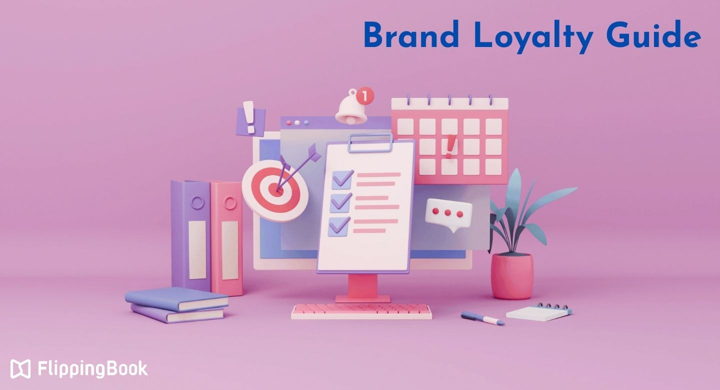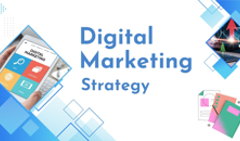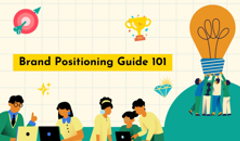Every customer interaction shapes their perception of your brand, whether you're nurturing a long-term relationship or just laying the foundation with someone new. An eye-catching logo or a memorable tagline will only get you so far. To create true brand champions, you need to engage your audience in a way that resonates with their interests and values. That's where a smart digital content strategy comes into play.
Unlike traditional collateral, interactive content implies participation: be it taking a quiz, watching videos, or flipping through the pages of an ebook. And if you make these online experiences easy to share, you can amplify reach, boost recognition, and create a community of loyal advocates who are excited to spread the word about your brand.
In this article, we'll explore the essence of brand loyalty, evaluate the role content marketing can play in it, and see how you can effectively leverage shareable, interactive content to build a lasting bond with your clients.
What Is Brand Loyalty
From Starbucks to Slack, the most iconic brands connect to us on a human level, and that connection drives loyalty, advocacy, and performance. If you asked someone to name their favorite brand in any industry, chances are, they'd have an answer right away. The choice might not always be logical—it's more of an emotional link, a cherished memory, or an exceptional experience rather than price and convenience.
Brand loyalty is a customer's inclination to purchase from the same brand over and over again, despite competitors offering similar (or better) products and services. This bond, like any relationship, takes time to develop—as your business commits to superior customer care, top-notch quality, and strong brand values. Brand loyalty isn't always tangible, but as a start, you can ask yourself these three questions:
✔️ Are your products in line with other competitors on the market?
✔️ Do you make an effort to nurture customers that stick by you?
✔️ Can people connect with the mission behind your brand?
Content marketing, as we'll see below, can play a significant role in the final aspect, and even overshadow the first two.
💡 Similar, but not the same
Customer loyalty vs. brand loyalty: Customer loyalty is broader than brand loyalty, and doesn't mean people respond well to you as a brand. If someone prefers the local grocery store because it's around the corner, they may be loyal to the place regardless of the brands they buy, and moving to a different city will change that.
Brand affinity vs. brand loyalty: Affinity goes a step further than loyalty, turning customers into long-term advocates even when they don't buy from you anymore. Loyalty, at its core, still relies heavily on repeat purchases—if product quality drops, regular clients may stop seeing your brand as the number one choice.
Why Is Brand Loyalty Important?
Customers don't just buy things—they invest in values and experiences that reflect their own aspirations. When you focus only on the products you create and not the stories you tell, finding a better offer on the market becomes too easy. Various brand loyalty statistics confirm that it leads to higher customer engagement, less sensitivity to comparisons, and, ultimately, an increase in revenue:
📉 71% of consumers have switched brands in the past year.
📉 62% of customers will ditch a brand if it fails to personalize their experience.
📈 About 70% of buying decisions, including brand preference, are not rational.
📈 7 in 10 consumers tend to choose a brand that reflects their personal beliefs.
📈 Emotionally connected clients have a 306% higher lifetime value.
Sources: MarketingCharts, MarTech, eMarketer, PMW.
How to Build Brand Loyalty Using Content Marketing
Now, let's look at brand loyalty strategies that revolve around digital content. Messaging is a big part of how people perceive your brand, so you need to consistently highlight your brand story and values across all online channels. Here's how you do that:
1. Define your brand identity. Start by clearly understanding what your brand represents. The fundamentals include a mission statement, purpose, objectives, and future plans. This step should already give you a few content topic ideas: for instance, if sustainability is part of your values, consider sharing eco-friendly initiatives. Visual representation matters, too: color psychology is a powerful thing, and you can use it to send a hidden message along with the main one.
2. Create engaging content. Prioritize content that invites participation: be it polls and quizzes, behind-the-scenes videos of your team, animated infographics, or digital flipbooks that combine all these interactive elements in a single page flip ebook. Align activities with your mission without overtly stating it—for example, if your brand values transparency, host live Q&A sessions and webinars where customers have the opportunity to ask questions directly.
3. Tell your brand story. Storytelling is essential for building brand loyalty. Share the narrative behind your business through blog posts, documentaries, or podcasts. People resonate well with founders or team leaders who have a strong social media presence and aren't afraid to share personal stories or challenges they've faced. And posting customer testimonials or success stories can encourage your customers to share their own experiences.
4. Be consistent. Make sure that your branding is uniform across all platforms—social media, website, newsletters, presentations, reports, etc. Create a style guide for your team with all the elements, strategies, and rules in one place. This brand manual can help your marketers, designers, and copywriters stay on the same page. To have it on hand at all times, share it with your staff as an online flipbook, always available in a click as a direct link.
Want to create an interactive brand book?
5. Understand your audience. Find out what truly matters to customers—by measuring how they respond to your content. Use built-in social media analytics or document tracking to see what engages people the most. Once you understand their needs and preferences, you can tailor your message accordingly. For instance, if you find that video content performs well, consider creating more interactive video series or product tutorials.
6. Reward your repeat customers. To deepen connections and foster loyalty, surprise your clients with exclusive content, discounts, or rewards. Give them early access to new products, invite them to beta-test upcoming features, send personalized thank-you videos, or hold giveaways on social media. Try to associate your brand with a sense of belonging and excitement, and you'll soon notice a community of loyal ambassadors forming around it.
⭐ A simple tip to increase brand loyalty
If your business has physical locations, you can use QR codes to make the online and offline worlds meet. Once customers scan the code, they'll have your digital content open up on their smartphone. And even as they walk away, your contact information, product offer, or branded brochure will still be with them!
Brand Loyalty Examples To Inspire Your Approach
Building brand loyalty isn't always about viral campaigns or advertising successes. You'll know when a company is getting it right: their satisfied customers will be the first to sing their praises through social media mentions, glowing reviews, or sky-high sales. If you want to add your brand to those ranks, here are three quick examples—along with content tips we can pick up on.
#1 Starbucks
Starbucks Rewards is probably one of the most famous brand loyalty programs out there, and for a good reason. Their mobile app uses a combination of user data, specific store insights, and purchase history to suggest relevant discounts for each customer. An excellent example of staying in touch with your audience, learning more about their unique preferences, and using analytics to your advantage.
The initiatives Starbucks takes on are also in line with their strong brand values:
☕ Starbucks is committed to ethical coffee sourcing.
☕ Their environmental goals are to cut carbon emissions by 50% by 2030.
☕ They focus on social impact, like donating meals or providing job opportunities.
As for content ideas, the seemingly small touch of putting a customer's name on their cup is actually a genius strategy for organic advertising via user-generated content. Starbucks visitors are more likely to share photos of their drinks online, which amplifies brand awareness and reach. For your business, you can think of similar ways to encourage social sharing—like limited-edition collections, customizable products, or personalized summaries of users' habits.
#2 Slack
Brand loyalty isn't exclusive to B2C brands. If you're a LinkedIn user, you must have seen all the Slack mentions and their brilliant responses in your feed! They come across as your favorite coworker, as the Slack team seizes every opportunity to reinforce their distinctive brand voice. It's friendly, approachable, and often with a touch of humor—which makes customers feel like they're part of a supportive community where every opinion is heard.
Their content strategy is consistent across all channels, and matches their brand values extremely well:
💻 Slack promotes open communication, both internally and externally.
💻 They prioritize collaboration and acknowledge every comment and mention.
💻 All interface texts, release notes, and updates carry the same tone of voice.
Consider a similar approach to customer engagement: monitor reviews and social mentions, and actively respond to them to create an open dialogue with your audience. Add small, thoughtful touches that surprise and delight your customers—be it through community-building initiatives or transparent online discussions.
#3 FlippingBook
Loving your product—and actively using it—is an essential component to building brand loyalty. At FlippingBook, we specialize in helping our customers create interactive digital flipbooks that are easy to share, but we don't just talk the talk! All our internal guides, marketing research reports, and public ebooks are made with our own tool. Flipbooks come with strong branding and content analytics to monitor engagement and reach.
Sustainability is a significant part of our mission, which works for us and for our clients:
🌱 Digital documents cut down printing waste and lower emissions.
🌱 We plant new trees for customer interviews and survey participation.
🌱 Our clients happily mirror both initiatives in their own work.
A great content piece to support our point is this brochure featuring customer testimonials about printing:
FlippingBook as a Sustainable Print Alternative
Want to go digital with your documents?
For your business, lead by example: use every chance you can to feature your product in your marketing materials and show authenticity. Whether it's through visual communications, how-to guides, team pictures, or behind-the-scenes spotlights, being a self-champion inspires trust and loyalty among your audience, as well.
Wrapping Up: Brand Loyalty Recipe
Emotional connection is the hidden currency of building brand loyalty. It's not just about the product you sell: it's how your brand, your story, and your actions make people feel. Stay in touch with what your customers want, make them feel heard, and invest in long-term relationships. Create moments and spread ideas that people want to be a part of—with the help of interactive, shareable content.





